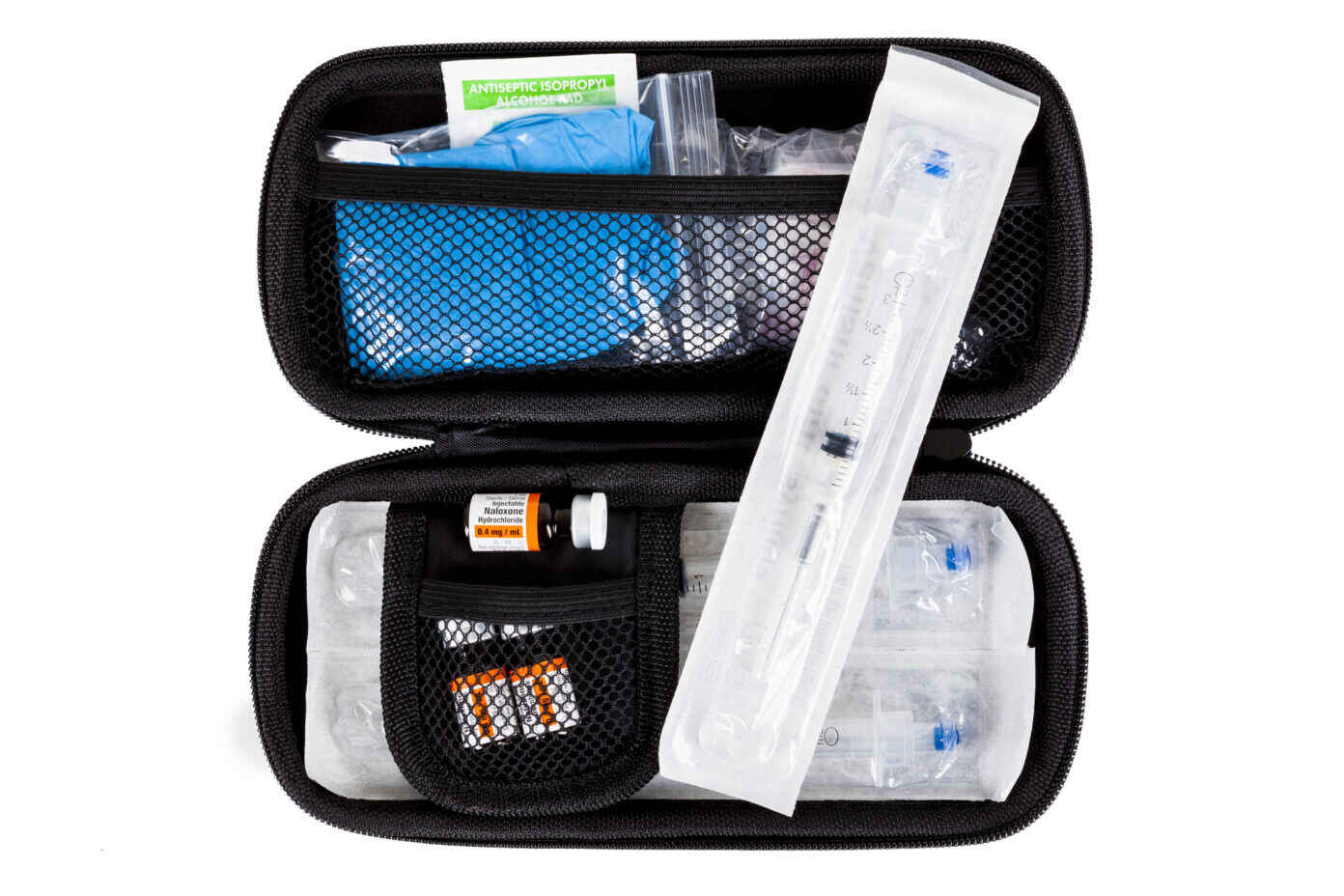Changing State Policy to Promote Stronger Opioid Antagonists: Unnecessary and Potentially Harmful
February 22, 2024
Overview
The increasing need for access to naloxone to reverse opioid-related overdoses has drawn the interest of pharmaceutical companies who see an opportunity to market new, non-generic, and more potent opioid antagonist products. State lawmakers have made changes in policy based on these marketing efforts. However, early research suggests that these high dose drugs are unnecessary and pose significant risks and side-effects, raising concerns over the commercialization of harm reduction efforts in the U.S.

One of the most important tools for reducing preventable overdose deaths is a simple, generic medication: naloxone hydrochloride. Available both as an injectable and a nasal spray, naloxone is an opioid antagonist that reverses opioid overdose. FDA-approved since 1971, it is incredibly effective, safe, and stable. It is truly a miracle drug.
This is why all 50 states and the District of Columbia have taken steps to increase access to naloxone. At least 47 states have statewide standing orders or protocols that allow for access to naloxone without an individual prescription, and most allow organizations such as harm reduction agencies, public health departments, and first responders to distribute it to the people most at risk of overdose: those who use drugs. In 2023, the FDA approved two nasal spray brands for over-the-counter purchase, enabling even easier access to the lifesaving medication.
However, the increasing need for and interest in naloxone has also brought increasing interest by pharmaceutical companies in marketing new, expensive products in patentable formulations. With fentanyl and other more potent opioids flooding the illicit drug markets, some have argued that there is a need for higher-dose naloxone and stronger opioid antagonists. In 2021 the FDA approved both a high-dose naloxone nasal spray (Kloxxado) and a high-dose naloxone injectable formulation (Zimhi). Last year, another nasal spray product containing nalmefene (Opvee), a different opioid antagonist that lasts longer than naloxone does, received FDA approval. These approvals have resulted in pharmaceutical companies approaching state lawmakers to push for changing the language in their state standing orders to include access to “any opioid antagonist” instead of simply “naloxone,” and many states have complied.
Not only does this change appear to be unnecessary, but it may also be harmful. Even though fentanyl has spread throughout the U.S. unregulated drug market in the past several years, studies have shown no significant corresponding increase in the amount of naloxone needed to reverse opioid overdoses. Despite the fears surrounding fentanyl in the media, fentanyl-involved overdoses can be reversed easily with traditional low-dose naloxone products. A recent study found “no benefits to administration of 8-mg intranasal naloxone compared with 4-mg product” and that individuals who received the higher-dose formulation had a more than 2.5 times higher risk of opioid withdrawal symptoms.
Reversing an overdose with such strong antagonists may also result in a greater risk of precipitated withdrawal, leaving the person in extreme discomfort. These feelings could push a person to seek out less reliable sources of injection drugs, use drugs with people that they normally would not, or engage in riskier injection practices than they may otherwise. A survey of people with lived/living experience using drugs in Michigan found that 95.3 percent of participants preferred a low-dose, traditional opioid antagonist to a stronger product due the painful consequences of precipitated withdrawal. Other adverse effects, such as tachycardia and pulmonary edema, have been associated with higher doses of opioid antagonists, and negative effects of precipitated withdrawal may make people naloxone-averse.
Making naloxone cheaper, easier to access, and saturating the community with low-dose naloxone doses is a much more effective use of government funding than developing, producing, and marketing high-dose naloxone and nalmefene products. Funds from opioid settlements and other sources should focus on evidence-based harm reduction efforts to ensure that naloxone is always available when and where it’s needed, and to prioritize listening to people who use drugs over listening to pharmaceutical companies whose projections of record profits on the backs of peoples’ pain calls into question a market-driven approach to addressing a public health crisis.
This post was written by Amy Lieberman, Senior Attorney, Harm Reduction Legal Project, Network for Public Health Law.
The Network for Public Health Law provides information and technical assistance on issues related to public health. The legal information and assistance provided in this document do not constitute legal advice or legal representation. For legal advice, readers should consult a lawyer in their state.
Support for the Network is provided by the Robert Wood Johnson Foundation (RWJF). The views expressed in this post do not represent the views of (and should not be attributed to) RWJF.
